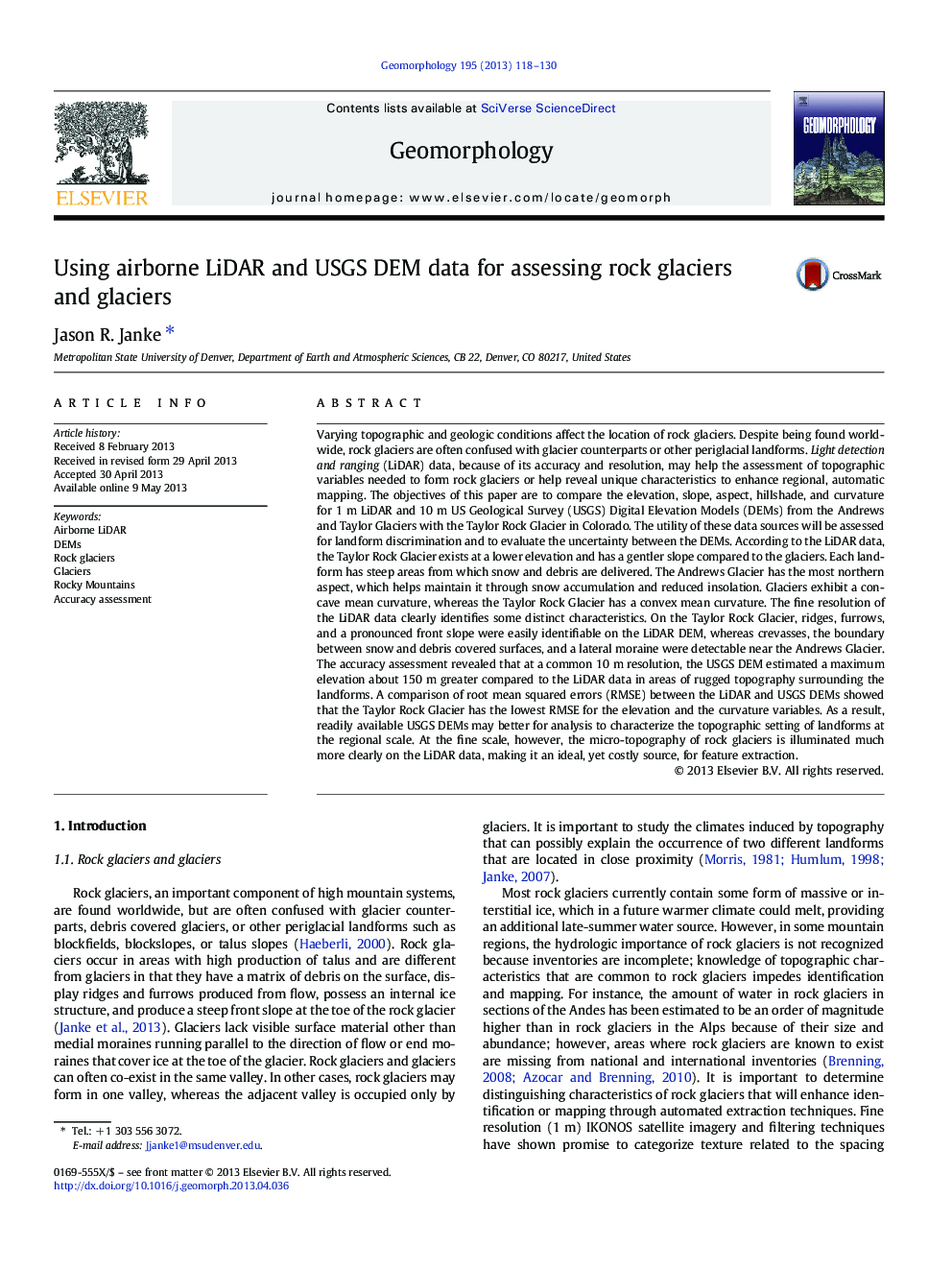| کد مقاله | کد نشریه | سال انتشار | مقاله انگلیسی | نسخه تمام متن |
|---|---|---|---|---|
| 4684831 | 1635454 | 2013 | 13 صفحه PDF | دانلود رایگان |

• The LiDAR DEM had greater ability to depict micro-topography.
• Rock glacier furrows, ridges, and a front slope are better represented on the 1 m DEM.
• Glacier crevasses and a lateral moraine are only detectable on the 1 m LiDAR DEM.
• Surface texture or roughness helps discern glaciers from rock glaciers.
• Terrain with high relief showed the greatest RMSE between data sources.
Varying topographic and geologic conditions affect the location of rock glaciers. Despite being found worldwide, rock glaciers are often confused with glacier counterparts or other periglacial landforms. Light detection and ranging (LiDAR) data, because of its accuracy and resolution, may help the assessment of topographic variables needed to form rock glaciers or help reveal unique characteristics to enhance regional, automatic mapping. The objectives of this paper are to compare the elevation, slope, aspect, hillshade, and curvature for 1 m LiDAR and 10 m US Geological Survey (USGS) Digital Elevation Models (DEMs) from the Andrews and Taylor Glaciers with the Taylor Rock Glacier in Colorado. The utility of these data sources will be assessed for landform discrimination and to evaluate the uncertainty between the DEMs. According to the LiDAR data, the Taylor Rock Glacier exists at a lower elevation and has a gentler slope compared to the glaciers. Each landform has steep areas from which snow and debris are delivered. The Andrews Glacier has the most northern aspect, which helps maintain it through snow accumulation and reduced insolation. Glaciers exhibit a concave mean curvature, whereas the Taylor Rock Glacier has a convex mean curvature. The fine resolution of the LiDAR data clearly identifies some distinct characteristics. On the Taylor Rock Glacier, ridges, furrows, and a pronounced front slope were easily identifiable on the LiDAR DEM, whereas crevasses, the boundary between snow and debris covered surfaces, and a lateral moraine were detectable near the Andrews Glacier. The accuracy assessment revealed that at a common 10 m resolution, the USGS DEM estimated a maximum elevation about 150 m greater compared to the LiDAR data in areas of rugged topography surrounding the landforms. A comparison of root mean squared errors (RMSE) between the LiDAR and USGS DEMs showed that the Taylor Rock Glacier has the lowest RMSE for the elevation and the curvature variables. As a result, readily available USGS DEMs may better for analysis to characterize the topographic setting of landforms at the regional scale. At the fine scale, however, the micro-topography of rock glaciers is illuminated much more clearly on the LiDAR data, making it an ideal, yet costly source, for feature extraction.
Figure optionsDownload as PowerPoint slide
Journal: Geomorphology - Volume 195, 1 August 2013, Pages 118–130